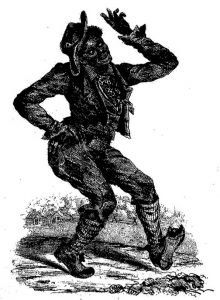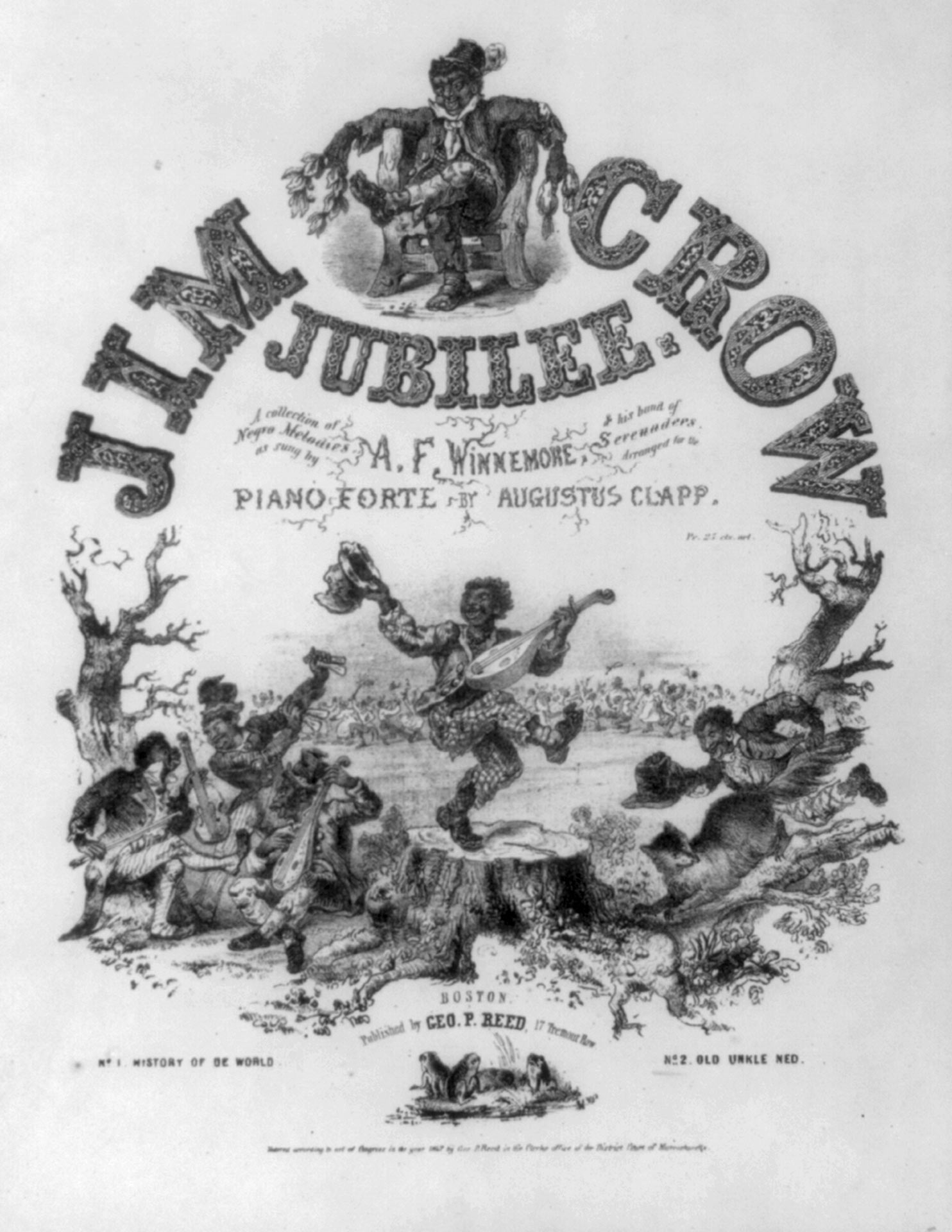
Williams Clay, Edward. “Mr. T. Rice as the Original Jim Crow”. In Jump Jim Crow: Lost Plays, Lyrics, and Street Prose of the First Atlantic Popular Culture by W. T. Lhamon, Jr. (Cambridge, Massachusetts: Harvard University Press, 2003).
In 1828 a New York City native, Thomas Rice, created the character of Jim Crow while performing in Louisville Kentucky. Performing in blackface, Rice presented the character of Jim Crow as a ragged, lazy, child-like, and irresponsible black man. Rice’s performance turned him into a celebrity, igniting the popularity of blackface minstrelsy throughout the United States.1
Blackface minstrelsy perpetuated and exaggerated stereotypes of blacks and thus served as a means of justifying slavery. Jim Crow was no exception. Jim Crow or the Sambo character quickly became the stereotype of black men. Depicted as ignorant, lazy, childish, and completely dependent on their master, minstrel performers justified slavery by implying that blacks were incapable of taking care of themselves. Spectators preferred this depiction of black men as loyal to their masters rather than the alternative stereotype of the Savage who was rebellious and would attack white women.2

“Minstrel Music with African American Jim Crow Caricatures.” In The American Mosaic: The African American Experience, ABC-CLIO, 2018. Image. Accessed March 6, 2018. https://africanamerican2.abc-clio.com/Search/Display/1612304.
Published in 1847, the cover of the Jim Crow Jubilee sheet music, “a collection of Negro melodies” promotes the Jim Crow caricature and blackface minstrelsy. The cover mirrors the staging of a minstrel show: one central figure surrounded by three other performers with a fiddle, mandolin, and bones. The crowd of people in the background also suggests that this image is set on a plantation and that this characterization of black people’s appearance and behavior is representative of the black population.
The central figure of Jim Crow greatly resembles the original image of Jim Crow that advertised for Rice’s performances. Both feature a smiling black man with exaggerated and comical facial features and ragged clothing, including torn pants and shoes. While we discussed in class that performers often wore fantastical clothing on stage, the earlier characterizations of Jim Crow highlighted this disheveled appearance. In both images, the Jim Crows also strike a similar pose as if they are in the middle of dancing to the blackface minstrel music.
The origins of Jim Crow in black face minstrelsy highlight how a character’s name came to be a symbol of black people as a whole, discrimination, and institutional segregation across the South. Depictions of Jim Crow and other black characters demonstrated to audience members that blacks were inferior to whites in their appearance, speech, intellect, and general behavior and personality. This characterization reaffirmed color boundaries and led to the establishment of Jim Crow segregation laws.
1 Burns, James. “Thomas Rice.” In The American Mosaic: The African American Experience, ABC-CLIO, 2018. Accessed March 6, 2018. https://africanamerican2.abc-clio.com/Sear ch/Display/1606088.
2 Nuruddin, Yusuf. “Jim Crow Racial Stereotypes.” In The American Mosaic: The African American Experience, ABC-CLIO, 2018. Accessed March 6, 2018. https://africaname ri can2.abc-clio.com/Search/Display/1407153.
